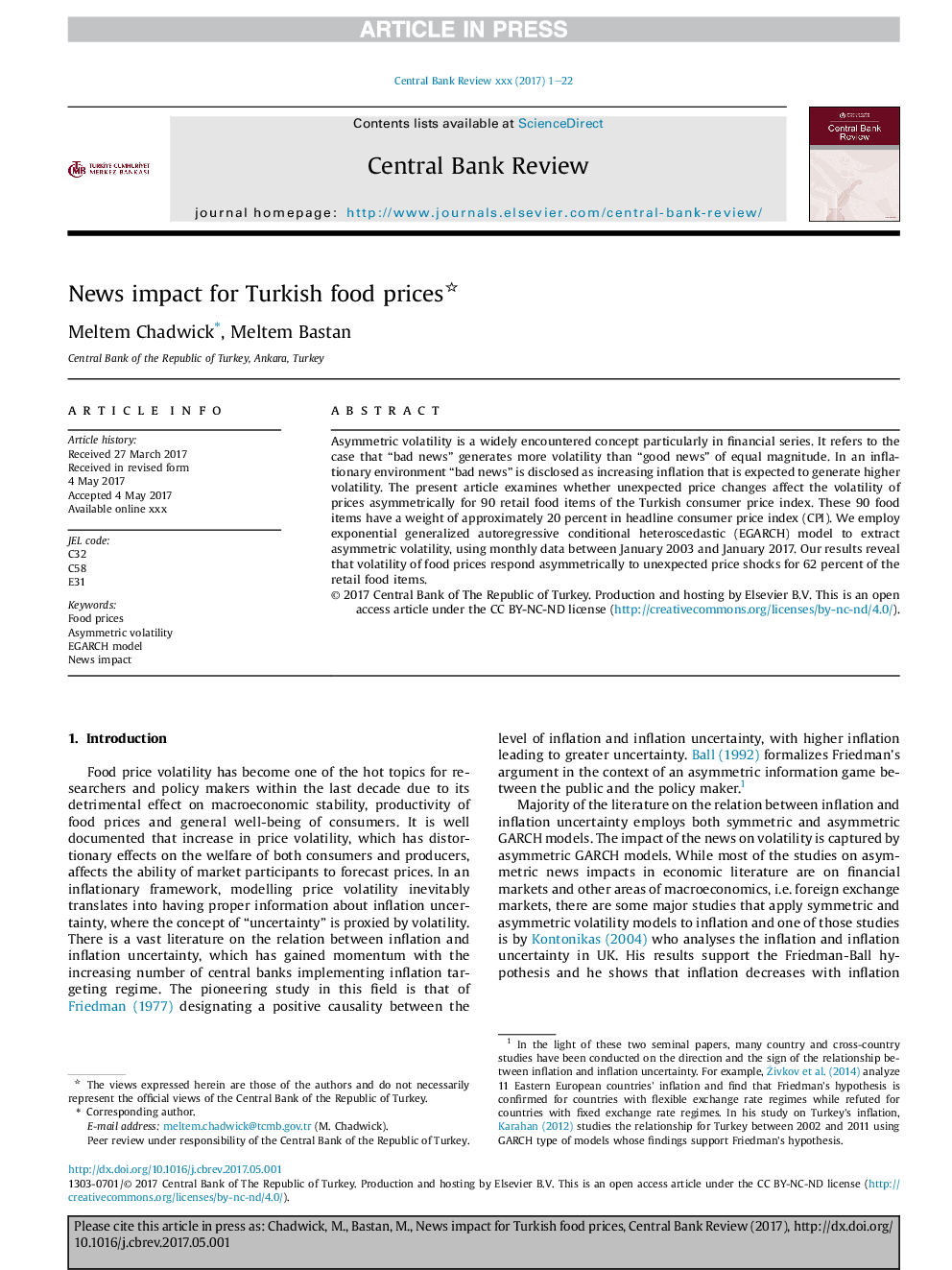| Article ID | Journal | Published Year | Pages | File Type |
|---|---|---|---|---|
| 7396151 | Central Bank Review | 2017 | 22 Pages |
Abstract
Asymmetric volatility is a widely encountered concept particularly in financial series. It refers to the case that “bad news” generates more volatility than “good news” of equal magnitude. In an inflationary environment “bad news” is disclosed as increasing inflation that is expected to generate higher volatility. The present article examines whether unexpected price changes affect the volatility of prices asymmetrically for 90 retail food items of the Turkish consumer price index. These 90 food items have a weight of approximately 20 percent in headline consumer price index (CPI). We employ exponential generalized autoregressive conditional heteroscedastic (EGARCH) model to extract asymmetric volatility, using monthly data between January 2003 and January 2017. Our results reveal that volatility of food prices respond asymmetrically to unexpected price shocks for 62 percent of the retail food items.
Related Topics
Social Sciences and Humanities
Economics, Econometrics and Finance
Economics, Econometrics and Finance (General)
Authors
Meltem Chadwick, Meltem Bastan,
